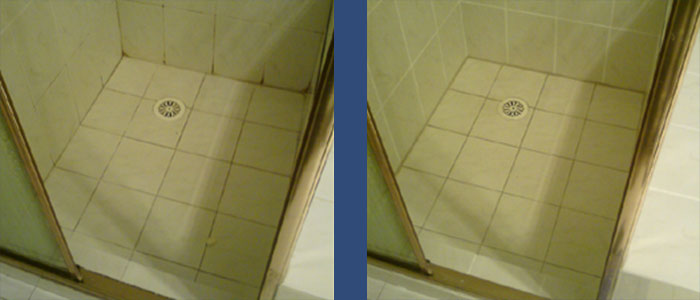How to avoid a Water Damaged Bathroom
How to avoid a Water Damaged Bathroom
Blog Article
Right here below you will discover a good deal of very good advice related to How to Prevent Bathroom Water Damage.

The washroom is extremely vulnerable for damp buildup and potential water damages as a result of the constant use of water in it. This short article uses straightforward inspection techniques to assist identifying water damages hazards.
The regular use water in the washroom makes it extremely susceptible for damp build-up and also possible water damage. By examining it routinely, you can minimize water relevant problems.
The adhering to set of inspections is simple to do as well as ought to be done once in every three months in order to keep your bathroom healthy as well as to avoid prospective water damages triggered by the bathtub, the shower, pipe joints and plumbing, sinks, closets, as well as the bathroom
Do not overlook performing these inspections as well as be extensive while performing them. Keep in mind that these straightforward examinations can conserve you a great deal of money by providing early signs for water damages
Tub and Shower
The shower and bath tub call for unique attention and upkeep. Inspect the ceramic tiles and change if fractured. Make certain that there is no missing grout in between the ceramic tiles. Inspect and also change broken caulking at joints where the walls fulfill the floor or the bathtub. Obstructed drains and pipelines issues will prevent the bath tub from drying out and might suggest major troubles below the bath tub. Seek advice from an expert right away to prevent architectural damages. Focus on discolorations or soft locations around the bath tub walls as they may suggest an internal leakage.
Plumbing
Signs for water damages are difficult to detect given that many pipes are mounted inside the walls.
Pay special focus to flooring and walls dampness as well as stains as they might suggest an invisible plumbing issue. Check dampness degrees in adjoining areas as well.
Sinks and also Cabinets
Sinks as well as cabinets are revealed to wetness and moisture everyday and also are typically overlooked. Check routinely under the sink as well as on the countertop over it. Fix any type of drip in the catch as it may recommend drain issues. Look around the sink, sluggish draining pipes may show a blocked drainpipe. Replace sink seals if they are fractured or loose.
The Toilet
The bathroom is a vulnerable water junction. Inspect the water lines and also search for leaks around the commode seat, in the hose, and under the water storage tank. If you find any kind of signs of dampness on the floor around the bathroom, look for leakages in the toilet rim as well as storage tank seals.
Realize that hanging toilet bowl antiperspirants raises the opportunities for obstructions.
Water Damage Signs In The Bathroom To Avoid Cleanup
Musty smell
This is one of the easiest signs to catch because musty smells are so odorous. The damp, earthy, moldy smell should be a big red flag. The smell will develop when moisture gets trapped in surfaces, and begins to facilitate mold growth. Leaking pipes under cabinets, inside walls, and behind shower fixtures will cause moisture to stay trapped and not dry, which will lead to mold growth and spread. As soon as you notice any musty smells in your bathroom, have it checked for hidden water damage and cleanup signs.
Visible mold
If the smell isn’t there to give it away, sometimes you will actually see mold growth. Finding mold in your bathroom is a serious problem, because mold is very harmful to your health. By the time mold growth is visible, it also means that water damage has already occurred and been present for some time. The only way the mold problem can be resolved is to find the source of the moisture and get it stopped. To safely and adequately remove mold, you need to have professionals handle the remediation. Do not waste any time in getting mold problems addressed, fixed, and sanitized so that you can protect you and your family from the many respiratory symptoms caused by mold exposure.
Damaged floors
Bathroom floors should be able to withstand some exposure to water while still remaining in good condition. However, when excess exposure or water leaks occur, they will begin to damage even the most water-resistant flooring. If you notice any cracking, bubbling, staining, or warping on your bathroom floors, there is probably a water leak somewhere causing the distortion. If you notice areas of the floor have become softer, or even have a spongy feeling, there is probably damage to the subfloor. Subflooring is typically made up of plywood. When plywood is exposed to water or moisture, it will absorb it. Once it has become saturated, the weight of the excess water will cause the wood to swell and soften. Check the floors in your bathroom frequently to catch any of these sings before they lead to damaged subflooring.
Changes on walls
When water leaks behind walls, it will cause changes in the drywall. Peeling plaster, blistering paint, and soggy wallpaper are all good indicators that excess water is building up behind the wall. Water leaking behind drywall will cause it to swell and be soft to the tough. If you start to notice gaps along the trim of your walls, or where tile meets the wall, it could also be a strong indicator that there is a leak behind the wall. Any changes, distortion, or damage on the walls should be evaluated as soon as you notice it to prevent further water damage and cleanup.

We were made aware of that write-up about How to Prevent Bathroom Water Damage through an acquaintance on a different blog. Please set aside a second to share this blog entry if you enjoyed it. I am grateful for your time. Visit us again soon.
Here Report this page